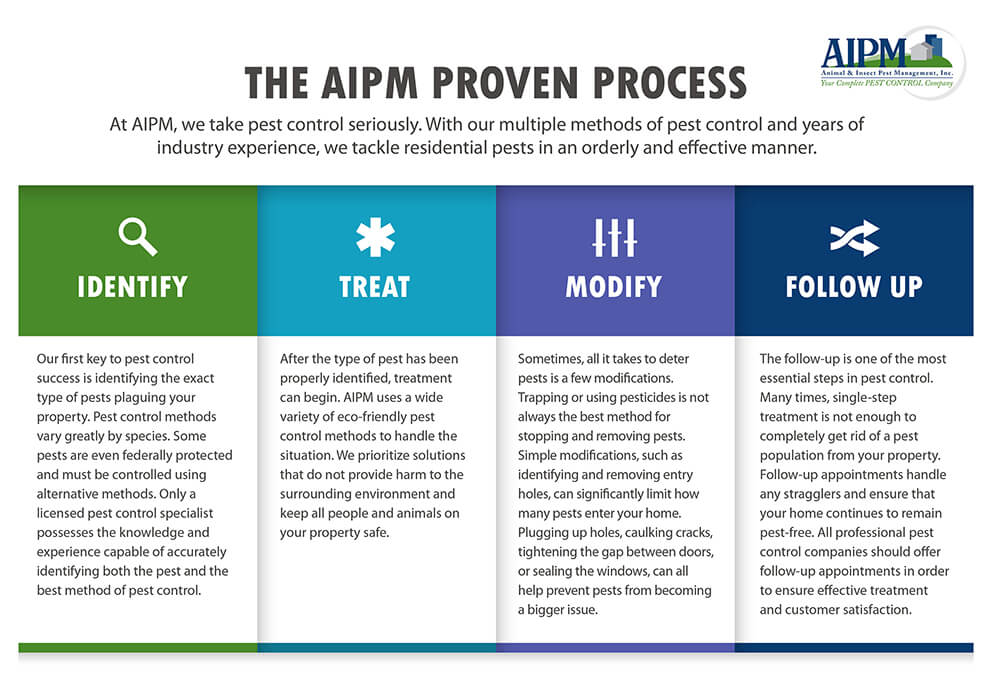Getting The Pestwise To Work
Getting The Pestwise To Work
Blog Article
Pestwise for Dummies
Table of Contents3 Simple Techniques For PestwiseSome Known Details About Pestwise What Does Pestwise Do?Getting The Pestwise To WorkPestwise for BeginnersRumored Buzz on PestwiseThe 45-Second Trick For Pestwise

Q. Define "incorporated bug administration" (IPM) and listing a number of possible control strategies that might be used in an IPM strategy. A. Integrated bug management is the combining of suitable insect control methods into a solitary plan to lower parasites and their damages to an appropriate level. Parasite control techniques might consist of: host resistance, biological control, social control, mechanical control, hygiene, and chemical (chemical) control.
What Does Pestwise Mean?
What can you do to keep the pests you are attempting to control from becoming immune to the pesticides you make use of? A. Parasite resistance can be decreased by using incorporated insect monitoring and revolving the sorts of pesticides used.
Parasites are a critical danger to the farming business, and incorporated insect management assists growers address and alleviate these dangers. Integrated parasite management makes use of several techniques in complicated, hence being an extra effective solution to the issue. Bed Bug Treatment. Particularly, eliminating aggressive chemical techniques permits minimizing damage to individuals and the setting by using natural and more secure options instead
The Ultimate Guide To Pestwise
The objective of integrated pest management is to minimize this injury and control appropriate invasion levels rather than eradicate all undesired populations. This is why it is important to comprehend what steps are justified in each situation and use hostile ones only when other integrated monitoring techniques don't function. Integrated management minimizes the negative repercussions of a non-IPM strategy, and the primary benefits of IPM Advantages of IPM.
A right understanding of the problem extent identifies if the issue ought to be resolved. are the next components of an IPM program because it is crucial to recognize if the organisms make potential dangers and choose the integrated management choices or the specific chemical use. mean to minimize problems by applying various agronomic techniques.
The Ultimate Guide To Pestwise
Integrated management options in an IPM program begin with much safer to extra hostile ones. The above-mentioned integrated administration facets assist recognize how to plan and execute an IPM program step by action: Screen your crops frequently.

Amongst others, IPM social techniques include the complying with field monitoring methods: dirt treatment; choice of suitable plants; crop rotation; interplanting or strip cropping; selection of planting days; weed control; usage of trap plants. Desirable soil conditions speed up plant development, and vigorous crops are more resistant to problems. Healthy and balanced plants and seeds determine effective crop growth, so it is important to select pest-free growing product with strong roots.
Therefore, among other applications, plant turning can be efficiently made use of as an integrated bug administration approach. Pests spread out slower if rows of various crop types divide their host plants in intercropping or strip cropping, which is additionally utilized in the incorporated parasite management system. Conversely, invasions boost when plants of the exact same plant kind or family members expand with each other.
Potato beetles can damage expanding potatoes, in read review addition to tomatoes. Growing trap plants in patches is another choice for IPM intercropping. This incorporated pest management approach recommends bring in insects to particular plants and afterwards controlling them with chemical or mechanical methods. Specifically, you can grow soybeans as trap crops for Japanese beetles.
Pestwise Fundamentals Explained
Barriers are normal instances of physical IPM approaches. Allow's take a closer check out them. Removing or choosing pests out by hand is a time and labor-consuming option that is commonly used in integrated monitoring and chemical-free farming. Fully grown insects or their eggs and larvae are accumulated by hand and destroyed.

Department of Plant Sciences. University of Missouri. Soil solarization is an effective integrated monitoring technique to decontaminate the area by heating it in an all-natural method. This incorporated administration technique implies an usual way of ruining insects by predators, parasitoids, microorganisms, and other biological control representatives (aka antagonistic organisms). The function of organic control in IPM is to.
Our Pestwise Diaries
With time, their population ended up being a real annoyance to farmers together with indigenous kangaroos or dingoes. The walking stick toad is one more instance illustrating incorporated organic control failure hereof when it rejected to search the target types and ended up being a bug itself. Parasitoids create on or within their hosts to at some point eliminate them after growing.
Report this page